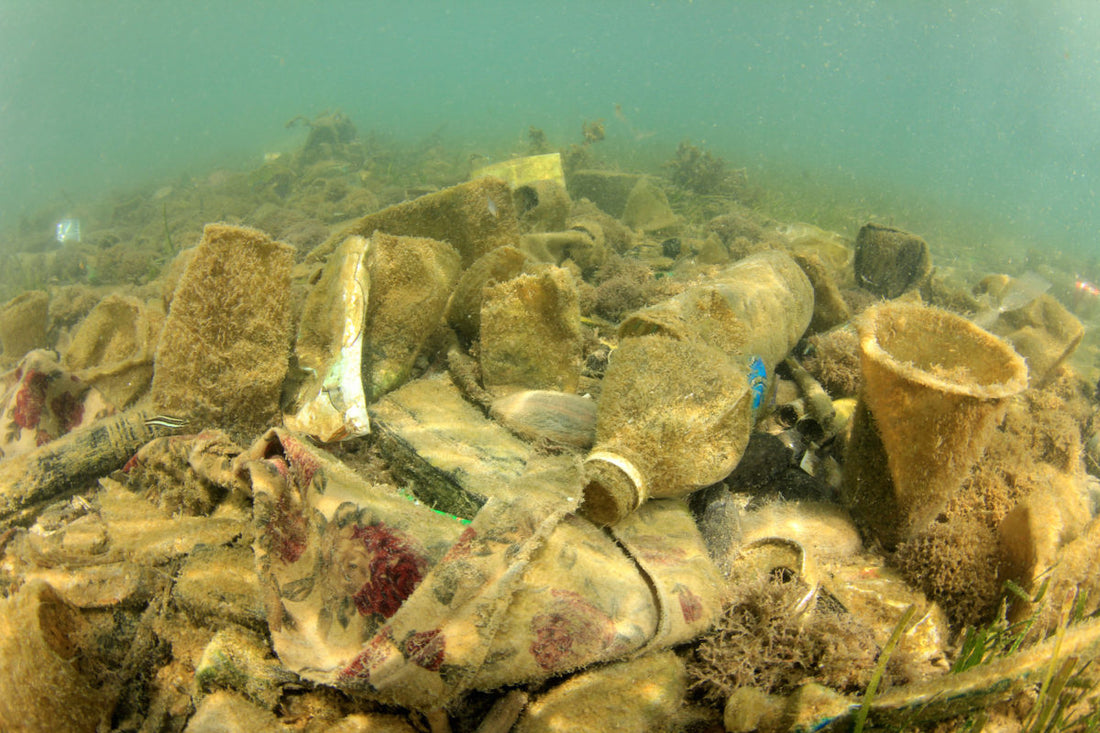The first completely synthetic plastic, called bakelite, was made in 1907 by Leo Baekeland. Since then, plastic has become a popular material to make many of the things we use today. From plates, utensils, toys, bottles, bags, and containers, to laptop cases and cell phones, plastic has been a cheap, but very useful material for consumer goods.
Although plastic is useful in many ways, it also causes harm to your health and more evidently, our environment. Luckily, there are enough healthier alternatives for us to rely on. Before we go into that, let’s explore what plastic is and some of the worst dangers plastic poses for our world.
What is Plastic?
The name plastic refers to the property of plasticity, which is the ability to deform without breaking.
Plastic is any synthetic or semi-synthetic organic polymer. While plastics can be created from just about any organic polymer, most industrial plastic is made from petrochemicals – chemicals obtained from petroleum and gas.
The polymer used to make plastic is almost always mixed with additives, including colorants, plasticizers, stabilizers, fillers, and reinforcements. These additives affect the chemical composition, chemical properties, mechanical properties, and the cost of the plastic. Some specific examples of additives include:
- Lubricants: for airplanes, hinges, locks
- Foaming agents: for carpet padding and foam insulation
- Flame retardants: for wire coverings, toys
- Antimicrobials: for wall covers, shower curtains, toilet seats
Types of plastic:
Polyethylene terephthalate – PET or PETE
The most widely produced plastic in the world, is highly recyclable, and considered predominantly a fiber (known as polyester) used for bottling and packaging. You’ll find this plastic in bottles, containers, clothes, carpet, etc.
High-density polyethylene – HDPE
A stiff plastic used for more robust packaging like laundry detergent containers, construction applications, trash bins, etc.
Low-density polyethylene – LDPE
High ductility and low tensile strength, this plastic is used for plastic bags in grocery stores.
Polyvinyl chloride – PVC
Strong and rigid, it is most well-known for its use in residential and commercial property construction applications.
Polypropylene – PP
Simple to manufacture and high in demand, this is used in a variety of products like textiles, automotive parts, living hinges, etc.
Polystyrene – PS
Also known as styrofoam, you can find used mostly for packaging, medical devices like test tubes and petri dishes, soft drink lids, etc.
Learning that there are this many types of plastics and counting makes me realize that there are a lot more things made with plastic than I knew. Just imagine all the mass productions happening every day, and all those products getting thrown out. After a doctor’s visit, when you finish a soda, when a construction project comes to an end, or even after coming home from a shopping trip.
10 Ways Plastic is Harmful to Our Health and Environment
As you can see, plastic plays a major role in our lives. It’s hard to imagine what our world and manufacturing would be like without the existence of plastic. But with all the additives in plastic, it doesn’t just store our food or is our children’s favorite toy anymore. Plastic becomes a harmful substance that not only causes harm to our bodies, but to our environment as well. Here are 10 ways plastic is harmful.

Plastic injures and poisons wildlife
All those videos and photos of marine animals and birds floating to the shore dead are the reality we face with the amount of waste and plastic we throw out. Every hour, 1.6 million tons of waste enters the ocean. By the end of each year, 14 billion tons of trash call the ocean their new home.
In 2015, National Geographic cited a study that found the ocean had 5.25 trillion pieces of trash and counting. These numbers are horrifying. Could you imagine someone dumping all that trash into your city? Your home? We probably couldn’t even bare just the smell within the first day.
Here are just a few examples of how plastic has harmed wildlife:
- As many as 50 percent of sea turtles are dying because the plastic obstructed their digestive system.
- Seals and sea lions get entangled in plastic, which leads to injury, infection, or death. An eight-year study in Alaska and British Columbia documented 388 sea lions caught up in plastic debris.
- Plastic pollution has led to the deaths of millions of marine bird species each year. An estimated 98 percent of Laysan albatross studied, had ingested some kind of plastic, causing punctured internal organs.
Plastic leach into our foods
BPA-free or not, toxins from plastic leach into our food and drinks more than we know or like to think. When microwaved or washed in extremely hot temperatures, plastic breaks down and releases particles that can get absorbed through skin contact or food or drinks. Although handwashing in lower temperatures help, plastic will still break down over time.
Plastic cross the placenta
You would think that the toxins and chemicals ingested from plastic circulating in the body or living in fat tissue is the worst of it. Sadly, they also add up and roam around in the placenta, which could explain why most babies are born having been exposed to chemicals.
Plastic causes reproductive harm and infertility
The toxins found in plastic can mimic estrogen, which can cause reproductive harm and infertility in men and women. Xenoestrogens can disrupt normal fertility cues, reduce testosterone count, and falsely elevate estrogen in men and women. These same chemicals could also interfere with normal testicular development.
Plastic gets into our water supplies
Plastic is not biodegradable, therefore doesn’t break down, at least not easily. This causes toxins to get released into the landfills they are at, which contaminates the soil and water they are near.
Plastic consume priceless energy
Like mentioned before, the production of plastic usually comes from chemicals from petroleum and gas. Plastic requires a lot of raw materials and energy to produce – energy that could be conserved or used elsewhere instead of making products that in theory, will never leave the environment.
Plastic increases risk of breast cancer
Researchers have linked certain chemicals found in plastic to breast cancer, one of the most common cancers found in women.
Plastic can bother the thyroid
We already know how chemicals in plastic affect the hormones in your body, but you probably wouldn’t think that it affects your thyroid as well. More than 27 million Americans suffer from thyroid problems, which are the most common cause of autoimmunity. Hormones from the thyroid affect almost every other hormone our body produces, so chemicals from plastic affecting the thyroid can negatively affect your reproductive, digestive, and cardiovascular health.
Plastic increases risk for heart disease
You ever wonder why you see “BPA-free” products like it matters? That’s because it does. Bisphenol A is a chemical used in food and drinks packaging, and have been reported to link to heart disease in the general adult population.
Plastic increases risk for diabetes
Toxins in plastic can increase your risk of developing type 1 or type 2 diabetes. Plastic can also lead to cellular confusion, which can increase the risk of autoimmune reactivity, or can reduce hormonal sensitivity, which leads to insulin resistance (type 2 diabetes).
Detox Foods For Your Liver
Toxins from plastics have not only found a way into our lives, but into our bodies. On top of all the unhealthy foods we probably consume, detoxing your liver becomes important. Here are 5 foods to help clean out your liver:
- Water
- Cruciferous vegetables
- Berries
- Leafy greens
- Garlic
15 Healthier Alternatives to Plastic:
- Metal straws
- Glass containers
- Silicone straws
- Stainless steel water bottles
- Silicone baggies
- Reusable bamboo forks and spoons
- Metal lunchboxes
- Silicone ice cube trays
- Wooden toys
- Glass baby cups and bottles
- Cast iron cookware
- Cotton mattresses
- Glass or porcelain plates
- Silicone or rubber toys
- Reusable fabric grocery bags
Let us know how you have helped reduce the usage of plastic to help our environment and your health!

 Log in
Log in
